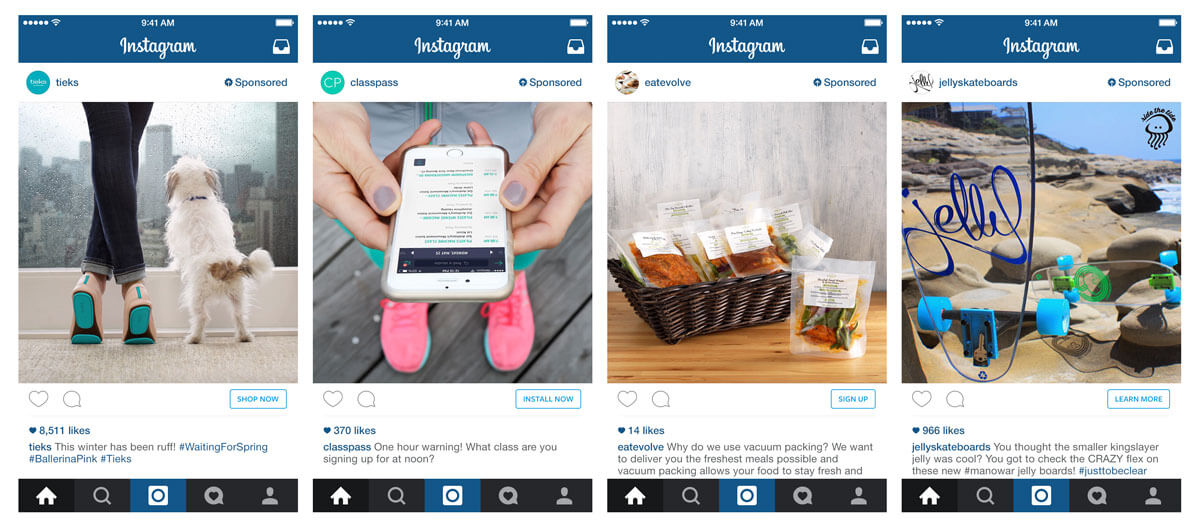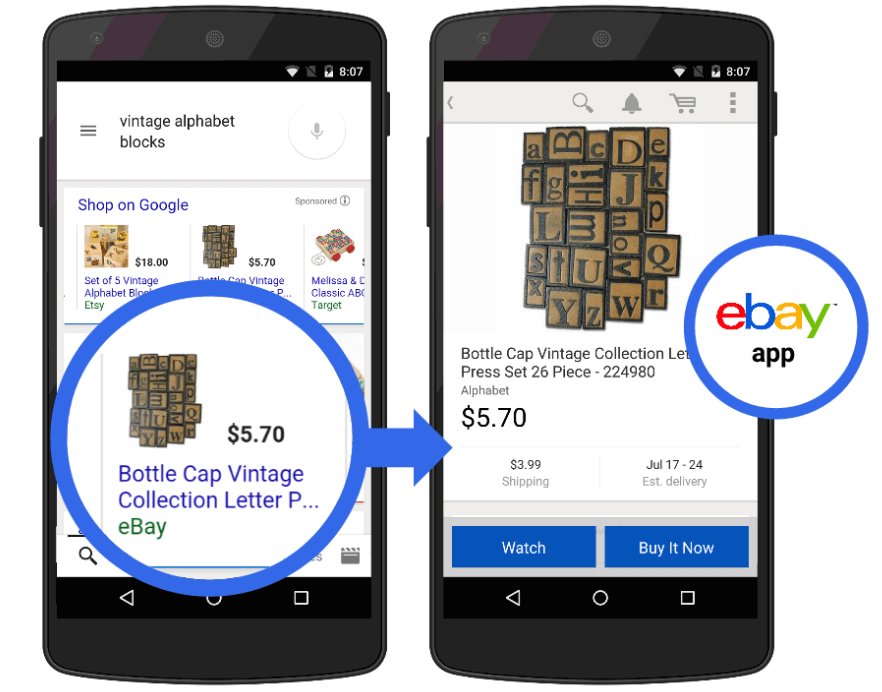Microcopy, Google Autocomplete and Advertising on Instagram
A summary of the posts published on our Hebrew internet marketing blog on July 2015. This month we reviewed Facebook’s new carousel ads on mobile devices, Instagram’s marketing recommendations for brands, the ROI from content marketing platforms such as Taboola and Outbrain, Google’s new purchase buttons on paid search results and its policy regarding new TLDs, and offered guides on how to use Google autocomplete for SEO and microcopy for higher conversion rate and branding.
New on Facebook: Carousel Ads for Mobile
Facebook announced expanding the carousel ad format to mobile platforms. The carousel ad format, which allows advertisers to include several images and links on a single ad, was introduced last year and it was found to increase conversion rate by 30%–50% and decrease CPA by 20%–30% comparing to ads with one image.

Full post: Carousel Ads on Facebook Mobile
Instagram Advertising and Marketing Strategy for Brands
Instagram announced adding several new features to its advertising system, and created a guide for a successful marketing for brands in countries where Instagram advertising is not available yet.

Full post: Advertising and Marketing on Instagram
How to improve ROI on Content Marketing Campaigns
Platforms such as Outbrain and Taboola are now an important content marketing tool, helping brands to distribute creative content, increase engagement and followers. But which content marketing platform is more effective? In a research published on MOZ, Seer Interactive tested the performance of several content marketing platforms on several clients from different niches and offered tips for improving ROI on content marketing campaigns.
Full post: Content Marketing and ROI (Outbrain vs. Taboola)
Google updates Guidelines for Representing Businesses
Google updated its guidelines for representing businesses on Google My Business and Google Maps, mainly focusing on how internet companies can represent their clients on Google services.
Full post: Google’s New Guidelines for Business Representations
Google introduces “Purchases on Google”
Google officially launched its talked about buy buttons on mobile ads. The new feature, “Purchases on Google”, is currently tested on selected branded ecommerce sites, and it will appear on paid search results in Product Listing Ads on both Android and iOS devices.

Full post: Google’s Buy Button on Mobile Search Results
Google answers Questions on Top Level Domains
Google answered some of the most common questions regarding top level domains, including new TLDs such as .guru and .how, old TLDs (.com, .org, etc.) and international top level domains. In short, Google has no preference to a certain type of TLD and all TLDs are treated equally on search results.
Full post: Google & TLDs FAQ
How to use Google Autocomplete for SEO
Google autocomplete is known as a keyword research tool, but it can only be used to generate content ideas, which increase organic traffic and gains links. Following MOZ case study, we tested the tool on medical cannabis content ideas.
Full post: Google Autocomplete as a Content Tool
Google closes Autocomplete API on Aug 10
Google announced shutting down the unofficial autocomplete API. This step might affect keyword research tools used for SEO and PPC which use the autocomplete API. According to Google, the API was used for unwanted purposes and it recommends websites using Google Custom Search Engine (CSE).
Full post: Google shuts down Autocomplete API
Google issues Warnings for Blocking JS & CSS
Google Search Console started sending alerts to websites that block CSS and JavaScript, warning that the blocking may result in “suboptimal ranking”. We offer a simple guide for removing the blocking on robots.txt.
Full post: How to Remove JS & CSS Blocking
Microcopy for Branding and CRO
Microcopy is the latest buzzword in internet marketing. Even though microcopy is not a new concept, only recently its importance in website content has been acknowledged. In short, microcopies are short pieces of texts that can be found on website’s error messages, usage guides, buttons and menus and security messages, and are designed to guide the user and remind him about the personal, unique voice behind the website.

Full post: How to use Microcopy to improve Conversions
nekuda Web Solutions provides high-level online marketing services and consulting for international and multilingual websites. Contact us for more details.



